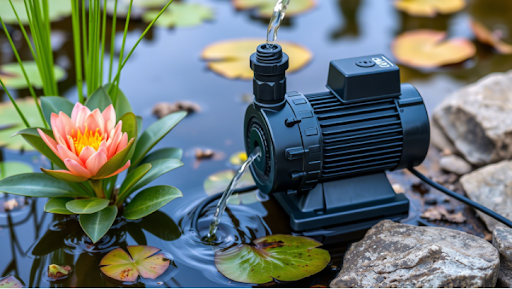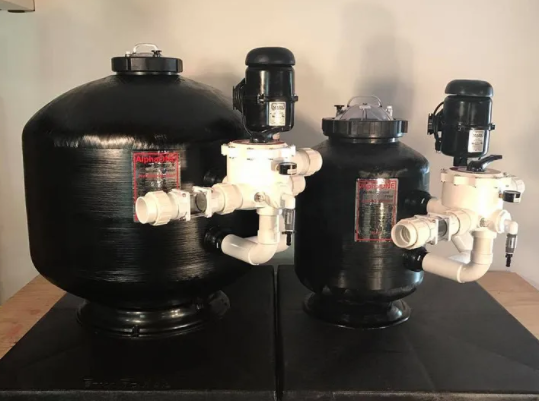-
Fil d’actualités
- EXPLORER
-
Pages
-
Groupes
-
Evènements
-
Reels
-
Blogs
-
Offres
-
Emplois
-
Forums
-
Film
Why Pond Pumps Are Essential for Clean, Healthy, Flowing Ponds?

When someone asks, “what pond pump is best for me?” the answer isn’t one-size-fits-all. Aquabead knows that a proper pond pump is vital to keeping garden ponds, koi ponds, and water features healthy and beautiful. In this guest post, they share what makes a great pump, how to choose one, and why their lineup is worth considering alongside top U.S. competitors.
Why Pond Pumps Are Fundamental?
Pond pumps do more than move water — they keep circulation going, push water through filters, support waterfalls, and help maintain oxygen and clarity. Without the right pump for ponds, stagnation, algae, and poor water quality begin to set in. Leading pond equipment brands understand this well. What sets a strong pump apart is efficiency, durability, quiet operation, and smart design.
Aquabead’s pumps are built with these in mind: robust motors, corrosion-resistant materials, and smart impeller designs. Their pricing competes well with mid-tier brands while offering better support and warranty policies.
A Look at Pump Varieties
One of the first choices a pond owner faces is which kind of pump. Here are common pond pump types and their uses:
-
Submersible pond pumps: These sit underwater, often in the pond or inside a skimmer. They’re easy to conceal and run quietly.
-
External / inline pumps: These sit outside the pond in a dry location. They are easier to service and can handle heavier demands.
-
Mag-drive / brushless models: Efficient, durable, and often used for smaller systems or features.
-
Direct-drive / high-head pumps: Suited for long lifts, tall waterfalls, or systems with more friction loss.
Compared to many U.S. brands that only specialize in one pump type, Aquabead offers a full range — so you can pick a koi pond pump for high flow or a smaller pond filter pump for filtration circuits.
Matching the Right Pump to Your Pond
Choosing a pump just by flow rate alone can cause issues. Here’s how to pick intelligently:
-
Flow vs. turnover rate: As a guideline, aim to move your full pond volume once every hour or two.
-
Head (height + friction): The pump must overcome vertical lift and losses in piping. Check pump curves to ensure sufficient performance at your head.
-
Application demands: Waterfalls, fountains, or long runs need more head and flow.
-
Solid handling & durability: Especially in ponds with leaves or fish, choose pumps built to resist clogging.

Aquabead publishes performance curves and helps customers pick models suited to their setup, which gives them an edge over many carry-over brands that force buyers to guess.
Saving Energy Without Sacrificing Power
Skipping out on efficiency costs you in the long run. Energy costs accumulate when a pump runs 24/7.
-
Use smart or variable-speed pumps: These adapt output to demand, reducing wasted power.
-
Right-size, not oversize: A pump that’s too big uses extra electricity without benefit.
-
High-efficiency motor design: Look for brushless or premium motor builds.
-
Maintain clean plumbing: Fouled intakes or clogged tubing increase load.
Aquabead’s new line includes variable models and energy-efficient motors, aiming to reduce electricity draw while still delivering strong performance.
Submersible vs External: Pros & Cons
When comparing external vs submersible pumps, these trade-offs matter:
-
Submersible: Quiet, hidden, simpler plumbing; harder to service without draining pond.
-
External: Easy maintenance, can last longer since motor stays dry; may require more complex plumbing and careful setup to avoid airlocks.
Because Aquabead offers both, customers can choose based on pond layout and convenience—something some competing brands don’t offer with equal quality.
How Much Pump Do You Actually Need?
Sizing is key:
-
Calculate pond volume (length × width × average depth) to get gallons.
-
Decide desired turnover (often 1× per hour or 0.5× for filtration systems).
-
Factor in head (vertical lift + friction in plumbing).
-
Select a pump whose flow curve meets or exceeds your needs at that head.
For koi ponds, many experts recommend doubling the turnover capacity to keep water extra clean.
Aquabead gives accessible sizing tools and charts to guide this process so users don’t overpay or undersize.
Installing with Confidence
Proper setup ensures your pump works efficiently all season:
-
Place pump (if submersible) in the deepest pond zone to draw debris.
-
Use smooth bends and appropriately sized tubing to reduce friction loss.
-
Ensure air-tight plumbing if above water.
-
Use check valves to prevent backflow when power goes off.
-
Prime external pumps carefully to avoid dry-run damage.
Competitor guides often skip these important steps. Aquabead includes clear instructions and post-sale support to help users get it right.
Maintenance That Keeps Pumps Running
Simple care prevents problems:
-
Rinse the pump intake cage and impeller monthly (or more in fall).
-
Avoid letting debris accumulate around intake.
-
Check electrical connections and ensure moisture protection.
-
Store spare O-rings and parts when winterizing.
-
Monitor performance: drop in flow often signals blockage or wear.
Because Aquabead’s pump parts (impellers, seals) are available and shipped economically, users don’t need to replace entire units.
Diagnosing Common Pump Issues
Even great pumps face occasional problems. Some frequent ones are:
-
Low or no flow — Cause: clogged intake or impeller, air leak, worn seals.
-
Overheating / burning — Cause: insufficient water flow or blocked cooling.
-
Air in line / sputtering — Cause: bad suction seal or priming issues.
-
Noise or vibration — Cause: loose parts, debris, misalignment.
Users who follow Aquabead’s troubleshooting tips and access responsive support resolve these quickly, rather than scrapping the pump entirely.

Best Pumps for Koi & Garden Ponds
For koi pond pump duty, maximum flow, durability, and reliability matter most. Garden ponds or decorative features may lean toward quieter, lower-flow pumps.
Aquabead’s high-end line for heavier pond systems rivals established U.S. brands, often at lower cost when you factor in warranty support and component replacement. Their smaller models compete well with boutique pond filter pump makers in both price and performance.
If a pond owner wants one brand that covers everything—from small garden pond filtration to big koi pond circulation—Aquabead’s offer is compelling compared to brands that force you to mix and match.
FAQs
Q1. How long should a pond pump run each day?
A pond pump ideally runs continuously to maintain circulation, but at minimum should operate during daylight hours or key temperature periods to support filtration and oxygen levels.
Q2. Can I use any pump for a koi pond?
Not all pumps suit koi ponds. You’ll need a model with enough flow, head capacity, and clog resistance to handle fish waste and maintain high water quality.
Q3. How often must I replace a pond pump?
With quality pumps and regular care, many last 5–10 years or more. Failures often happen due to clogging, dry-run, or seal wear—not motor burnout.
Q4. What size pump do I need for my pond?
Calculate your pond’s volume and aim for turnover rate (e.g. full volume per hour). Add head pressure needs and pick a pump whose flow curve meets or exceeds those specs.
Q5. Can I use a pump for both waterfall and filtration?
Yes, many setups split flow via valves: one path sends water to a filter, another to waterfall features. Just be sure the pump has the capacity.
With this detailed guide, Aquabead positions itself as an expert brand—helping pond owners make smarter decisions while subtly showcasing its competitive pricing, support, and product range. This content also fits well as a guest post on aquatics, gardening, or home & outdoor sites.
- AI
- Vitamins
- Health
- Admin/office jobs
- News
- Art
- Causes
- Crafts
- Dance
- Drinks
- Film
- Fitness
- Food
- Jeux
- Gardening
- Health
- Domicile
- Literature
- Music
- Networking
- Autre
- Party
- Religion
- Shopping
- Sports
- Theater
- Wellness


